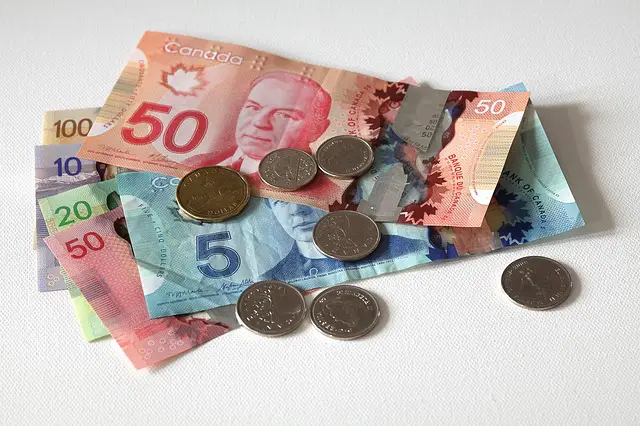Do You Qualify For The GST/HST Payments in March 2025?
Many Canadians who pay GST/HST can get the Canada GST/HST credit in 2024. This credit is a tax-free payment given every three months.
There isn’t anything you need to do to apply for the credit. In fact, you’ve likely received your cheques in the mail, deposited them, and gone about your day.
However, suppose you’re looking for more information on HST and GST payments, including how much you qualify for. When you should expect to receive your money, or even the determining factors as to whether or not you will receive the credit, you’ve come across the perfect article.
GST payment dates for 2024
The CRA has stated it will pay out GST/HST credits for 2024 on the following benefit payment dates:
- January 5th 2024
- April 5th 2024
- July 5th 2024
- October 4th 2024
An additional note: if the 5th of the month falls on a Saturday, Sunday, or statutory holiday, the payment will be made the business day before the 5th.
You can also view your GST/HST CRA payment dates and amounts in your CRA account or by using the MyBenefits CRA mobile app.
GST/HST credits will be deposited into recipients’ accounts via direct deposit or by cheque.

How much GST/HST credit will you get in 2024?
The maximum credit taxpayers can expect to receive per base year is as follows:
- $496 if you are single
- $650 if you are married or have a common-law partner
- $171 for each child under the age of 19
However, it is important to understand that your GST/HST credit amount is based on a multitude of factors. The easiest way to find out how much you’ll be paid is to go to the CRA’s website and use this family benefits calculator.
The amount of credit you will receive is dependent on the following criteria:
The base credit amount, as well as whether or not you are single, married or common-law, and whether or not you have children under the age of 19 years old that will benefit from the HST/GST credit. So, as you can see, the income threshold varies.
The government takes either your net previous year’s income level or your adjusted family income — the combined net income of you and your spouse — into consideration to determine your overall credit.
The same rules apply if you and your spouse are married or if you’re a common-law couple. Single parents are treated differently.
Keep in mind that the government doesn’t place count activities such as buying stocks in a TFSA as part of your income limit.
As a side note, it’s important to let them know if your marital status changes, as this can impact your payments.
While the HST/GST credit partially depends on your family structure and number of children, it’s separate from the Canada Child Benefit (CCB). The Canada Child Benefits application is here.
It’s also important to note that there are a number of factors that can change the amount of credit you receive, including a reassessment of your tax return, a divorce, a child turning 19 years of age or a death.
Information on the additional one-time GST credit payment made in November 2022
Because of the rising costs of inflation, the Government of Canada issued an additional one-time payment to individuals and families that was roughly equivalent to 50% of their annual GST/HST credit amount.
If you were eligible for this payment, you should have received it in November of 2022. It was based on your adjusted family net income from 2021.
If you feel you were eligible for this payment but did not receive it, it is best to contact the Canada Revenue Agency or head to the CRA GST/HST page to learn more.
Am I eligible for a GST/HST Credit?
You need to be a Canadian resident with a valid social insurance number to be considered for the credit.
After that, the government will use your previous year’s tax return to judge whether or not you’re eligible.
For example, payments made at the start of a calendar year are likely to use the previous year’s tax return as eligibility criteria. Then, as you file taxes in the current year, that filing will be used to determine eligibility.
Unlike the tax-free savings account in which you gain your contribution room regardless of income taxes filed, the GST/HST credit requires you to file a tax return in order to qualify.
What this means is even if you have no income for a current year, you still file your taxes, so you are eligible for the GST/HST credit.
How to apply for the GST/HST credit
As mentioned at the start of the article, the Canada Revenue Agency automatically determines your eligibility when it comes to the GST/HST tax credit.
So, there is no GST/HST application and no due date to worry about. All eligible individuals need to do is keep up with your current tax returns.
What happens if they pay me too much?
Suppose you ended up receiving too much, or perhaps a recalculation by the government causes your qualification amount to be reduced. In that case, you may end up owing the government part of, or potentially even all of your GST/HST credit.
If you’re still receiving credits and were perhaps just paid too much, the CRA states that they will keep all further credit payments until the balance is repaid.
Suppose you are no longer eligible to receive the GST/HST credit and owe money for an overpayment or wrong payment. In that case, you will either need to pay the Canada Revenue Agency back, or they will simply deduct it from your tax balances or amounts owing.
Other supplemental programs to the GST/HST credit
If you’ve noticed your GST/HST tax credit is higher than what you should be allotted, you may not have actually been overpaid.
In fact, you may have qualified for another one of these provincial and territorial programs, which are paid out in combination with your GST/HST credit payments:
- Saskatchewan low-income tax credit
- Ontario sales tax credit
- Newfoundland and Labrador senior’s benefit
- Newfoundland and Labrador income supplement
- New Brunswick harmonized sales tax credit
- BC Climate Action tax credit
- Prince Edward Island sales tax credit
- Nova Scotia Affordable Living Tax Credit
What about provinces that don’t have HST?
The Harmonized Sales Tax (HST) actually used to be called the blended sales tax but was put into place in the mid-1990s by 3 of the 4 Atlantic provinces.
It was done in an effort to combine a provincial sales tax with the federal government’s goods and services tax (GST). Many more would adopt this combined tax rate, and as a result, the sales tax rates can vary significantly from province to province.
Let’s first have a look at provinces that don’t have a Harmonized Sales Tax and only charge the 5% GST:
- The Northwest Territories
- Nunavut
- Yukon
- Alberta
Then, we can look at those provinces that charge a Provincial Sales Tax (PST) and Goods and Services Tax (GST) separately:
- Manitoba – 7% PST, 5% GST, 12% total tax
- Quebec – 9.975% PST, 5% GST, 14.975% total tax
- British Columbia – 7% PST, 5% GST, 12% total tax
- Saskatchewan – 6% PST, 5% GST, 11% total tax
And finally, let’s take a look at those that combine both their Provincial Sales Tax and the Goods and Services Tax to get a Harmonized Sales Tax:
- Prince Edward Island – 15%
- Nova Scotia – 15%
- Newfoundland and Labrador – 15%
- New Brunswick – 15%
- Ontario – 13%

Can I still get old GST/HST credit payments?
Absolutely. If you haven’t filed prior income tax returns, it’s best to get them done. A family of three could get over $3,000 and a single person $1,800 in retroactive GST returns from the past three years!
